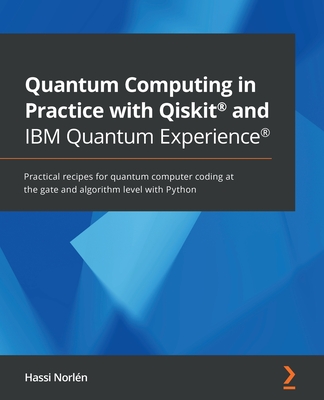Once Upon an Algorithm: How Stories Explain Computing (Hardcover)
暫譯: 算法的故事:如何透過故事解釋計算機科學 (精裝版)
Martin Erwig
- 出版商: MIT
- 出版日期: 2017-08-11
- 售價: $1,200
- 貴賓價: 9.5 折 $1,140
- 語言: 英文
- 頁數: 336
- 裝訂: Hardcover
- ISBN: 0262036630
- ISBN-13: 9780262036634
-
相關分類:
Algorithms-data-structures
-
相關翻譯:
算法往事:關於計算的那些事 (簡中版)
-
其他版本:
Once Upon an Algorithm: How Stories Explain Computing
立即出貨 (庫存 < 3)
買這商品的人也買了...
-
 無瑕的程式碼 - 敏捷軟體開發技巧守則 (Clean Code: A Handbook of Agile Software Craftsmanship)
無瑕的程式碼 - 敏捷軟體開發技巧守則 (Clean Code: A Handbook of Agile Software Craftsmanship)$580$452 -
 精通 Python|運用簡單的套件進行現代運算 (Introducing Python: Modern Computing in Simple Packages)
精通 Python|運用簡單的套件進行現代運算 (Introducing Python: Modern Computing in Simple Packages)$780$616 -
 Emotional UX (Voices That Matter)
Emotional UX (Voices That Matter)$1,780$1,691 -
 Data Structures and Algorithms Made Easy: Data Structures and Algorithmic Puzzles, 5/e (Paperback)
Data Structures and Algorithms Made Easy: Data Structures and Algorithmic Puzzles, 5/e (Paperback)$1,750$1,663 -
 Augmented Reality: Where We Will All Live
Augmented Reality: Where We Will All Live$2,450$2,328 -
 Effective SQL 中文版 | 寫出良好 SQL 的 61個具體做法 (Effective SQL : 61 Specific Ways to Write Better SQL)
Effective SQL 中文版 | 寫出良好 SQL 的 61個具體做法 (Effective SQL : 61 Specific Ways to Write Better SQL)$450$356 -
 TensorFlow + Keras 深度學習人工智慧實務應用
TensorFlow + Keras 深度學習人工智慧實務應用$590$460 -
 Design Elements, Color Fundamentals: A Graphic Style Manual for Understanding How Color Affects Design
Design Elements, Color Fundamentals: A Graphic Style Manual for Understanding How Color Affects Design$1,430$1,359 -
 寫程式前就該懂的演算法 ─ 資料分析與程式設計人員必學的邏輯思考術 (Grokking Algorithms: An illustrated guide for programmers and other curious people)
寫程式前就該懂的演算法 ─ 資料分析與程式設計人員必學的邏輯思考術 (Grokking Algorithms: An illustrated guide for programmers and other curious people)$390$308 -
 $1,100Building Virtual Reality with Unity and Steam VR
$1,100Building Virtual Reality with Unity and Steam VR -
 Python 初學特訓班 (增訂版) (附250分鐘影音教學/範例程式)
Python 初學特訓班 (增訂版) (附250分鐘影音教學/範例程式)$480$379 -
 7天學會大數據資料處理—NoSQL:MongoDB入門與活用, 2/e
7天學會大數據資料處理—NoSQL:MongoDB入門與活用, 2/e$400$312 -
 Computer Science Distilled: Learn the Art of Solving Computational Problems(paper)
Computer Science Distilled: Learn the Art of Solving Computational Problems(paper)$1,100$1,045 -
 Deep Learning|用 Python 進行深度學習的基礎理論實作
Deep Learning|用 Python 進行深度學習的基礎理論實作$580$458 -
 Data Science Algorithms in a Week
Data Science Algorithms in a Week$1,490$1,416 -
 初探機器學習|使用 Python (Thoughtful Machine Learning with Python)
初探機器學習|使用 Python (Thoughtful Machine Learning with Python)$480$379 -
 單元測試的藝術, 2/e (The Art of Unit Testing: with examples in C#, 2/e)
單元測試的藝術, 2/e (The Art of Unit Testing: with examples in C#, 2/e)$650$507 -
 iOS 11 程式設計實戰 -- Swift 4 快速上手的開發技巧200+
iOS 11 程式設計實戰 -- Swift 4 快速上手的開發技巧200+$580$458 -
 用 TensorFlow 提早進入人工智慧的未來世界
用 TensorFlow 提早進入人工智慧的未來世界$560$476 -
 Soft Skills 軟實力|軟體開發人員的生存手冊 (Soft Skills: The software developer's life manual)
Soft Skills 軟實力|軟體開發人員的生存手冊 (Soft Skills: The software developer's life manual)$520$411 -
 Docker 這樣學才有趣:從入門,到玩直播、挖礦
Docker 這樣學才有趣:從入門,到玩直播、挖礦$450$356 -
 Python:期貨演算法交易實務 121個關鍵技巧詳解
Python:期貨演算法交易實務 121個關鍵技巧詳解$500$390 -
 演算法圖鑑:26種演算法 + 7種資料結構,人工智慧、數據分析、邏輯思考的原理和應用 step by step 全圖解
演算法圖鑑:26種演算法 + 7種資料結構,人工智慧、數據分析、邏輯思考的原理和應用 step by step 全圖解$450$356 -
 Python 入門邁向高手之路王者歸來
Python 入門邁向高手之路王者歸來$699$594 -
 Java By Comparison: Become a Java Craftsman in 80 Examples
Java By Comparison: Become a Java Craftsman in 80 Examples$1,460$1,387
商品描述
Picture a computer scientist, staring at a screen and clicking away frantically on a keyboard, hacking into a system, or perhaps developing an app. Now delete that picture. In Once Upon an Algorithm, Martin Erwig explains computation as something that takes place beyond electronic computers, and computer science as the study of systematic problem solving. Erwig points out that many daily activities involve problem solving. Getting up in the morning, for example: You get up, take a shower, get dressed, eat breakfast. This simple daily routine solves a recurring problem through a series of well-defined steps. In computer science, such a routine is called an algorithm. Erwig illustrates a series of concepts in computing with examples from daily life and familiar stories. Hansel and Gretel, for example, execute an algorithm to get home from the forest. The movie Groundhog Day illustrates the problem of unsolvability; Sherlock Holmes manipulates data structures when solving a crime; the magic in Harry Potter's world is understood through types and abstraction; and Indiana Jones demonstrates the complexity of searching. Along the way, Erwig also discusses representations and different ways to organize data; "intractable" problems; language, syntax, and ambiguity; control structures, loops, and the halting problem; different forms of recursion; and rules for finding errors in algorithms.
This engaging book explains computation accessibly and shows its relevance to daily life. Something to think about next time we execute the algorithm of getting up in the morning.
商品描述(中文翻譯)
想像一位電腦科學家,盯著螢幕,瘋狂地在鍵盤上點擊,駭入系統,或者開發一個應用程式。現在刪除這個畫面。在《Once Upon an Algorithm》中,馬丁·厄維格(Martin Erwig)解釋了計算不僅僅發生在電子電腦中,而是將電腦科學視為系統性解決問題的研究。厄維格指出,許多日常活動都涉及問題解決。例如,早上起床:你起床、洗澡、穿衣、吃早餐。這個簡單的日常例行公事通過一系列明確的步驟解決了一個反覆出現的問題。在電腦科學中,這樣的例行公事稱為演算法(algorithm)。厄維格用日常生活和熟悉故事中的例子來說明計算中的一系列概念。例如,漢賽爾與格蕾特(Hansel and Gretel)執行一個演算法以從森林回家。電影《土撥鼠日》(Groundhog Day)說明了無法解決的問題;福爾摩斯(Sherlock Holmes)在破案時操作數據結構;哈利·波特(Harry Potter)世界中的魔法通過類型和抽象來理解;而印地安那·瓊斯(Indiana Jones)則展示了搜尋的複雜性。在這個過程中,厄維格還討論了表示法和組織數據的不同方式;「難以處理」(intractable)問題;語言、語法和歧義;控制結構、迴圈和停機問題;不同形式的遞迴;以及尋找演算法錯誤的規則。
這本引人入勝的書以易於理解的方式解釋了計算,並展示了其與日常生活的相關性。下次我們執行早上起床的演算法時,可以思考這些內容。





















